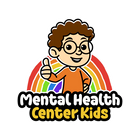Theory of Mind (ToM) is the ability to understand what others are thinking and feeling. It helps children handle social situations by predicting how people might react in different situations.
A recent study published in the Journal of Affective Disorders analyzed data from 20 different research papers to explore how anxiety affects ToM in children. The study included 3,110 children between the ages of 4 and 19.
Overall, the results showed that anxiety makes it harder for children to use ToM, especially when it comes to understanding emotions. This means that anxious children may struggle to recognize and interpret other people’s feelings, which makes social interactions more difficult.
Interestingly, the study found no major differences between anxious autistic children and anxious neurotypical children when it came to ToM abilities. Additionally, different types of anxiety disorders didn’t seem to affect ToM in different ways — all forms of anxiety had a negative impact.
These findings show that anxious kids would benefit from both anxiety management techniques, and building social skills.
Understanding the Research
This research looked at how anxiety affects kids’ ability to understand others' thoughts and feelings, also known as Theory of Mind (ToM). To find studies on this topic, researchers searched different databases in July 2022.
After collecting the studies, the researchers decided which ones to include by setting certain rules. They included studies on kids under 19 who had anxiety, even if they didn’t have an official diagnosis. They also included studies about different types of anxiety, like social anxiety, phobias, OCD, and PTSD.
To be part of the research, the studies needed to measure how well kids understood mental states like thoughts, feelings, and intentions.
These were the specific findings:
- Anxious kids struggle more with understanding others’ thoughts and feelings (Theory of Mind or ToM). When comparing children with high and low anxiety, they found that those with high anxiety performed worse on ToM-related tasks. (The participants were divided into groups based on their anxiety levels.)
- When kids took an actual ToM test (where they had to show their ability to understand mental states) anxiety had a stronger negative impact.
- However, when parents or kids just gave their opinions about their social skills, the connection between anxiety and ToM was much weaker.
- Kids with diagnosed anxiety disorders had more trouble than those with mild anxiety.
- All types of anxiety may affect ToM, but the researchers can’t be sure if they all have the same effect. However, social anxiety (fear of being judged by others) was studied the most (44% of studies), so its link to ToM is clearer.
Practical Strategies for Parents and Caregivers
Since anxiety can make it harder for kids to understand what others are thinking and feeling, parents and caregivers can take steps to support them. Here are some helpful strategies:
Manage anxiety through therapy and coping strategies
Therapy, like Cognitive Behavioral Therapy (CBT), can help kids challenge negative thoughts and improve their confidence in social situations. CBT works by teaching children to recognize anxious thoughts, question whether those thoughts are true, and replace them with more helpful ones.
CBT also teaches coping skills like deep breathing, progressive muscle relaxation, and visualization.
Encourage perspective-taking
Perspective-taking means helping kids put themselves in someone else’s shoes — imagining what others might be thinking or feeling in a situation. This skill is important for Theory of Mind.
Anxious kids often worry about social situations and may misinterpret other people’s actions. Through perspective-taking, they can reduce negative assumptions and feel more confident in their interactions.
One way to teach perspective-taking is by role-playing different situations with your child and discussing different reactions. For example, you can act out a scenario where a friend doesn’t respond to a greeting.
Ask your child, “Why do you think they didn’t say hello?” Help them consider different possibilities, such as the friend being distracted, shy, or having a bad day, rather than assuming they were being rude.
Model social skills
Parents can model social skills to encourage kids to work on their Theory of Mind. As they see you practicing good social habits, they learn how to interpret emotions and respond appropriately.
Some of these key social skills include understanding body language, taking turns in conversations, making eye contact, and handling disagreements respectfully.
According to the authors, anxiety in autistic children is not measured well, and future studies should focus on assessing anxiety in this group more accurately.
Help your child manage anxiety and strengthen their ability to understand others with our Anxiety Worksheets and Social Skills Worksheets! These resources provide valuable knowledge and exercises.





















































